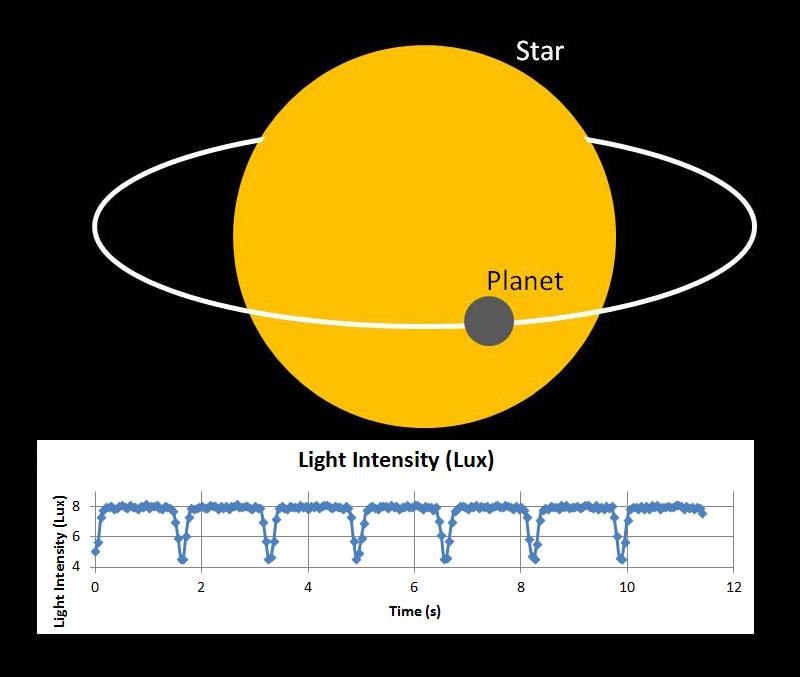Over the past twenty years, scientists have discovered hundreds of what are known as exoplanets—planets that orbit stars outside of our own solar system. Different groups of scientists worldwide have used a variety of methods to detect these planets. In this lesson we will investigate a method that has been quite fruitful in finding exoplanets as a result of the Kepler Mission, launched by NASA in 2009. Another similar mission is CoRoT, led by the French Space Agency. These missions identify exoplanets by a method called transit, in which the brightness of a star decreases when a planet passes directly between the star and the observer. In this lesson, students will use PocketLab Voyager to simulate the discovery of an exoplanet using the transit method. They will also discover how to determine the orbital period of the exoplanet.

